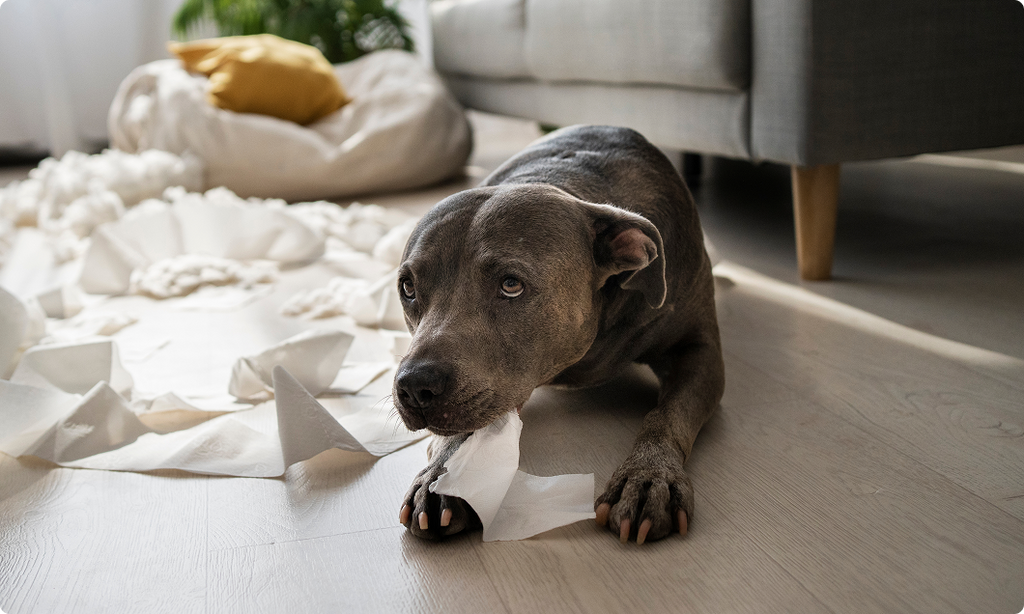Is Raw Diet Right for Your Dog? Raw Dog Food Pros and Cons

Dog owners agree that their four-legged best friends deserve the best. For most, this means an active life filled with fun and affection. Ultimately, this often comes down to providing your dog with a premium diet that will boost their physical and mental health. And with so many dog owners switching to a BARF diet food, you’ve likely wondered if a raw diet is right for your dog.
Taking the time to understand how a raw diet can benefit your dog and what risks it comes with helps inform your decision for your dog’s diet. The easiest way to make up your mind regarding what goes into your dog’s bowl is by examining the pros and cons of a raw food diet for your dog.
What Exactly Is Raw Dog Food and a Raw Diet?
The idea of feeding our best friends uncooked meat can raise the hairs on the back of your neck. Yet raw feeding has been around for decades (and centuries if you ask wolves). Since then, raw dog diets have evolved to include more meats, better recipes, and higher standards for preparing, packaging, and distributing raw dog food.
Raw feeding diets can be homemade or prepared by a dog food company.
A raw diet is as simple as it sounds. Raw feeding means providing your dog with uncooked food. Most raw diets use a whole-prey approach to the ingredients in their recipes. A whole prey approach considers the fact that your dog’s ancestors would have consumed the organs, bone, and stomach contents of what they caught.
Furthermore, contemporary raw feeding philosophies acknowledge the fact that dogs need more than just meat. Dogs are not true carnivores [1]. They’re omnivores that eat a lot of meat, but other stuff, too. This is where the principles behind BARF (biologically appropriate raw food) diets originate. BARF dog foods contain legumes, vegetables, fruits, and other nutritionally necessary components.
No matter if it’s raw, cooked, or freeze-dried, or somewhere in between, your dog’s diet needs to be nutritionally balanced [2].
Why Feed a Dog a Raw Diet?

The biggest motivation for feeding dogs a raw diet is that it reflects the diet pre-domesticated dogs would have consumed. This is often perceived as healthier because it is more natural, and your dog’s body may be better equipped to turn raw food into energy, healthy cells, and more.
Our dogs are adapted to digest raw meat, bone, and uncooked vegetables. In fact, dogs have been eating raw meat for much longer than they’ve been given kibble [3]. If you think about it, kibble is somewhat strange. A dog in the wild would never come across cereal-shaped bites that are void of moisture. Furthermore, wild dogs would never be exposed to chemical preservatives that become free radicals.
Avoiding unnatural chemicals is a major motivation for many raw-feeding dog owners. Most raw dog diets do not include the chemical preservatives found in dry dog food. Additionally, when proteins, fruits, vegetables, and other ingredients are cooked, some of their micronutrients break down [4].
Finally, many dog owners appreciate being able to control what goes into their dog’s food. This is why many choose to prepare their dog’s diet at home or order raw recipes with limited wholesome ingredients. For a convenient and nutritious option, consider Chick Magnet with Superfood Extras—a premium raw recipe crafted with lean protein and superfoods to support overall health and vitality.
So, What Does Raw Dog Food Include?
Contemporary raw food diets for dogs rarely include just meat. They include a wide array of ingredients, including:
- Meat from muscle
- Ground bone
- Marrow
- Animal fat
- Internal organs
- Egg
- Vegetables
- Fruit
- Yogurt
- Vitamins
- Minerals
Are There Safety Issues with Raw Feeding?
Many dog owners wonder if a raw diet is safe for dogs, and they may have even read a long list of “Why a raw diet is bad for dogs?” You want to keep your pup, yourself, and your family safe while feeding your dog a healthy, nutritious diet, after all. Luckily, when it comes to safety, dependable raw dog food producers take safety precautions to prevent dog owners from being vulnerable to contamination. That doesn’t mean every raw diet is created equal, though.
Most problems of raw feeding arise from mishandling of raw meat and an unbalanced recipe.
Raw meat does contain natural bacteria and microscopic parasites. Dogs’ bodies are adapted with enzymes to kill these contaminants in their digestive tracts. Unfortunately, these microbes can make people quite ill.
What Bacteria Can You Find in Raw Meat?
- Salmonella
- E. coli
- Yersinia
- Campylobacter
- Listeria
-
Staphylococcus [5]
This makes how meat is handled extremely important. First, you always want to purchase your dog’s raw diet from a reputable dog food company. It’s also important to thoroughly wash your hands or any surfaces that come in contact with raw meat.
Many critics of raw feeding believe that these microbes can be transferred from dogs to kids. How? Through a kiss, an unclean dog bowl, paw, or other routes. So, if you choose to go raw, be sure to talk to your children about safe interactions with your pup.
How Can a Raw Diet Lead to a Nutritional Imbalance?
Most nutritional deficiencies arise from homemade raw dog foods. It can be difficult for dog owners to account for every nutritional aspect of their dog’s needs. For example, dogs need certain calcium and phosphorus, which can be difficult to achieve with a homemade raw diet. This is why using a trustworthy dog food brand with a qualified veterinary nutritionist is non-negotiable.
The Meaty Truth: The Pros and Cons of Raw Dog Food
So, raw food diets can provide pups with micronutrients not found in cooked foods, but they can also contain microbes that can get people sick. Consider these pros and cons before making up your mind:
|
Pros of Raw Feeding |
Cons of a Raw Dog Diet |
|
Dogs enjoy the raw meat flavour |
Has to be handled properly, otherwise, contaminants can be transferred to surfaces |
|
Filled with micronutrients lost in the cooking process |
Often more expensive than a dry food diet |
|
Provides dogs with the whole nutritional value of ingredients |
Must be stored in the freezer |
|
Does not contain artificial preservatives, flavour, or colouring |
Homemade raw diets can lead to malnutrition |
|
Cleaner ingredients provide dogs with healthy energy |
Excellent choice for dogs with allergies. |
|
Can be an easy way to avoid allergens or ingredients your dog struggles to digest |
|
|
You know exactly what is in your dog’s food |
Is Your Dog Ready to Dive Into a Raw Diet?

Ultimately, your dog depends on you for its nutritional needs. It’s up to you to decide if a raw diet is within your price range and if the benefits outweigh the disadvantages. Do raw fed dogs live longer? Not necessarily, but they likely have a higher quality of life.
Of course, it’s important to keep in mind that store-bought dry dog food is often a source of synthetic preservatives that can be carcinogenic. There have also been countless cases of E. Coli and nutritional deficiencies in popular dry dog food recipes.
If you’re on the fence, adding some raw food to your dog’s breakfast and dinner can help you decide. Raw food dog food mixed with a fresh dry food diet can also be a great way to provide your dog with micronutrients, flavour, and the organs and bones dogs would naturally consume.
Order your dog’s raw diet from an Aussie brand you can trust. Petzyo’s premium raw dog food is nutritionally balanced and easy to order.
Subscribe now for top-quality raw meals!
References:
[1] https://www.dogfoodadvisor.com/canine-nutrition/dogs-carnivores-omnivores/
[2] https://www.dogfoodadvisor.com/canine-nutrition/dogs-carnivores-omnivores/
[3] https://www.akc.org/expert-advice/nutrition/interesting-things-humans-used-to-feed-dogs/
[4] http://citeseerx.ist.psu.edu/viewdoc/download?doi=10.1.1.1069.4205&rep=rep1&type=pdf
[5] https://www.azolifesciences.com/article/Microbes-in-Raw-Meat.aspx




